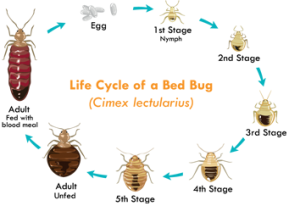Finest Kings Bug Control Cincinnati: Premier Exterminators
Kinds of Bug Control: Which Technique Is Right for Your Invasion?
When faced with a parasite infestation, the choice of an appropriate technique for pest control is vital in efficiently handling the scenario. By exploring the different kinds of insect control techniques available, individuals can make educated choices tailored to their distinct conditions, ensuring a much more lasting and reliable result in bug eradication.
Chemical Insect Control
Chemical bug control entails using synthetic or naturally obtained chemicals to take care of and get rid of pest populations efficiently. This technique is frequently made use of in farming, forestry, and residential settings to fight a variety of parasites, consisting of weeds, bugs, and rodents. Making use of chemical pesticides can offer quick and targeted services to pest invasions, making it a preferred choice for several people and organizations.
Among the vital benefits of chemical parasite control is its capacity to quickly get rid of bugs, minimizing the danger of damage to crops, building, and human wellness. By making use of certain chemicals that target specific insects, this technique can efficiently control infestations while decreasing injury to helpful organisms and the environment when applied appropriately.
Nevertheless, using chemical insect control also elevates worries regarding potential damaging impacts on non-target species, water resources, and human health and wellness. It is critical to follow safety standards, apply chemicals sensibly, and think about alternative parasite control techniques to reduce these threats and make sure sustainable parasite administration techniques.
Biological Parasite Control
Organic pest control, also understood as biocontrol, makes use of living microorganisms to lower and handle insect populations normally. By using the insect's all-natural predators or microorganisms, biological bug control provides a ecologically pleasant and sustainable solution to pest monitoring.

Mechanical Insect Control
Utilizing hands-on and physical techniques to take care of pest populaces, mechanical parasite control uses a different technique that does not rely on using living microorganisms or artificial chemicals. This method involves using barriers, catches, or various other devices to literally discourage or remove insects. By obstructing insect access points or establishing up traps to catch them, mechanical parasite control can successfully reduce invasions without presenting chemicals into the setting.
One common example of mechanical parasite control is using mesh displays on doors and windows to stop insects from going into structures. This simple yet efficient approach acts as a physical barrier, maintaining pests out while permitting correct ventilation. Furthermore, tools like mousetraps, fly swatters, and ultrasonic repellents drop under the mechanical pest control classification.
While mechanical parasite control methods can be labor-intensive and require routine surveillance and upkeep, they offer a environmentally friendly and sustainable option for taking care of parasite infestations. By integrating different mechanical techniques, property owners can produce an extensive bug control approach that minimizes reliance on chemical pesticides.
Physical Pest Control

Some common physical bug control methods consist of the use of obstacles such as nets or screens to prevent bug entry, catches to record and get rid of insects, and hand-picking to literally remove parasites from plants or structures. Furthermore, techniques like warm therapies can be used to regulate pests like bed insects by elevating the temperature to degrees that are dangerous to the insects.
Physical bug control is particularly beneficial in incorporated pest administration (IPM) strategies, where multiple bug control approaches are combined for efficient parasite management while lessening making use of chemicals. By utilizing physical insect control strategies, people can effectively deal with parasite infestations with minimal environmental influence.
Integrated Parasite Management
When executing physical bug control approaches as component of pest management techniques, Integrated Bug Monitoring (IPM) becomes a comprehensive approach that leverages different methods to successfully manage pest populaces. IPM concentrates on lasting avoidance of bugs via a combination of biological, cultural, physical, and chemical devices customized to specific insect issues. By incorporating several control techniques, IPM aims to decrease the threats connected with parasites while also minimizing dependence on chemical options.
One secret facet of IPM is the emphasis on tracking and assessing pest populations to figure out the most appropriate control methods. This positive method permits for very early treatment and targeted methods, leading to more efficient pest monitoring. Additionally, IPM promotes environmentally pleasant methods by focusing on non-chemical control methods and only utilizing pesticides as a last resource.
Verdict

By using the bug's all-natural predators or microorganisms, biological parasite control provides a environmentally pleasant and sustainable service to pest management. - Kings cincinnati pest control companies
Making use of physical and hands-on techniques to manage bug populaces, mechanical pest control uses an alternate technique that does not depend on the use of living microorganisms or synthetic chemicals.An effective strategy to managing parasite treating termites in your home populations without relying on chemical or biological techniques includes the use of physical parasite control methods.When executing physical insect control approaches as component of parasite management methods, Integrated Bug Management (IPM) arises as a thorough method that leverages different strategies to successfully regulate pest populaces. Chemical parasite control includes the use of pesticides, biological bug control makes use of all-natural predators, mechanical bug control includes physical obstacles, physical parasite control consists of capturing or getting rid of pests, and integrated insect monitoring combines numerous approaches for an alternative strategy to pest control.